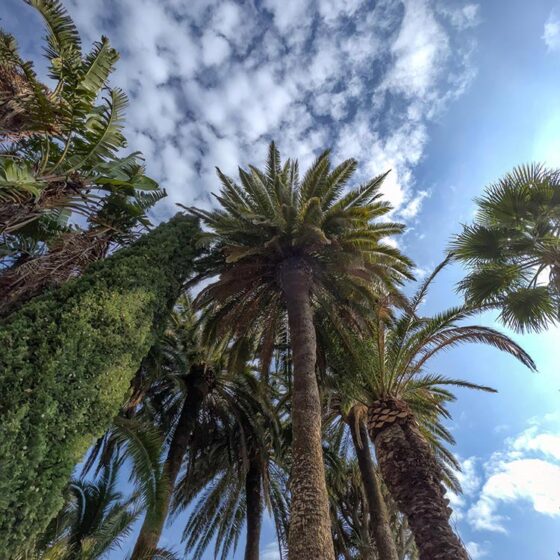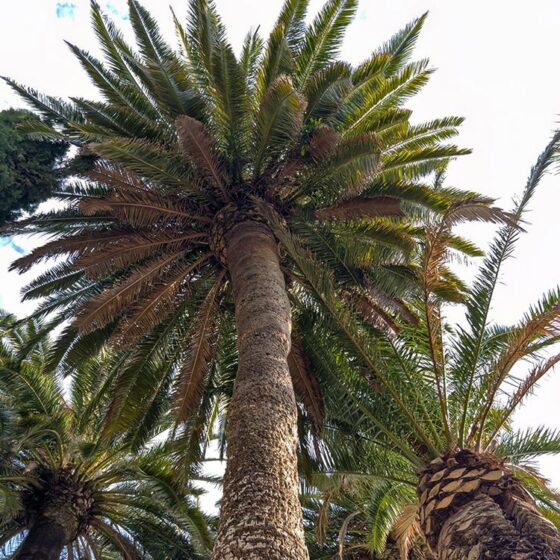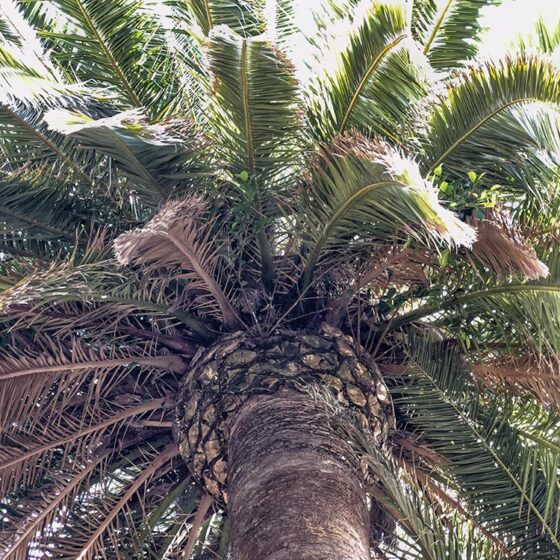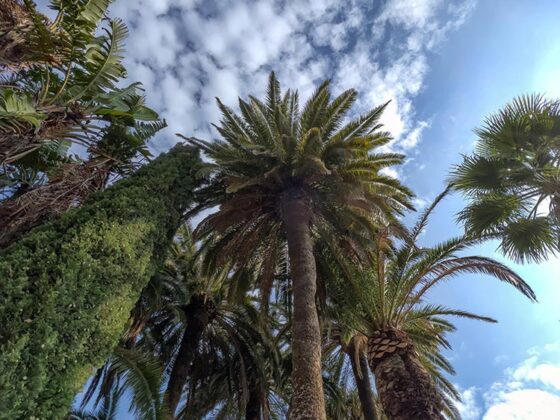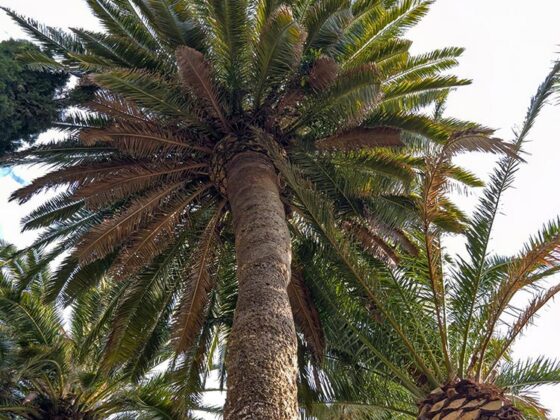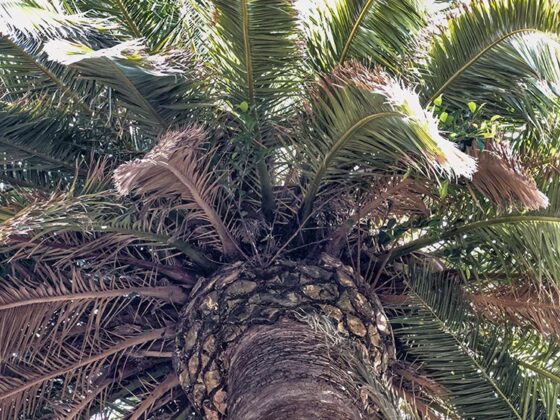Canary Island Date Palm
Phoenix canariensis
It adopts the generic name of its relative Phoenix dactylifera, from the Greek phoenix, already mentioned by Theophrastus, since it was probably the Phoenicians who first made these trees known to the Greeks in Phoenicia. According to some, its name comes from Greek Phoenix = red purple, by the colour of its fruits and according to other authors, its name is because its leaves remind us of the feathers of the mythological Phoenix bird, also red purple. The specific name indicates its origin and is an endemism of the Canary Islands, currently extended to other regions through cultivation, especially in the Mediterranean region and southwest Europe.
A dioecious palm tree with a single-trunk, 18-20 m in height and a thickness of 80-90 cm in diameter. The pinnate leaves, which are a light green colour, are 5 to 7 m in length with thorns in the base which form a dense wreath. Yellow flowers hang in close-knit bunches. Fruit, ovoid drupe of a strong orange to reddish colour, measuring 2 cm, hang in clusters in the female palms, are a little fleshy and inedible. It reproduces with seeds with easy germination at 3-4 months.
The Palm tree is very ornamental, rustic, and tolerates all types of soil though prefers more sand-based ones. It flourishes in close proximity to the sea, and can be used in parks and planted in lines along walks. They can live more than a century. In the Canary Islands, palm honey is obtained from the sap.
In Cadiz, you can see great examples of these trees in Genovés Park, Plaza de Mina, Plaza de Candelaria, Plaza de España, Paseo de Carlos III, Plaza de las Tortugas, Plaza de Asdrúbal, Parque de Varela, Parque de los Cinco Continentes, etc.


